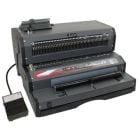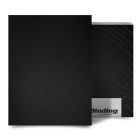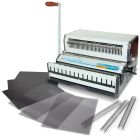The DIY Guide to Binding Your Own Training Manuals
Training manuals can be very helpful and they have a number of different uses. They can be used for educational purposes in school; for informational purposes on the job; and they can also be used for fun, such as learning a musical instrument or artistic technique. A lot of businesses and organizations have begun preparing and binding their own training manuals in-house to save money. The good news is that it’s easy to do with the right equipment. Here is a step-by-step guide to binding your own training manuals:
- Writing, editing, layout, and printing. The first thing you need to do is write your training manual. (This is the perfect project for your company’s copywriter or technical writer.) Keep your instructions succinct and easy to read. You will probably want to have a manager proof the copy to ensure that the instructions meet company standards. When you’re ready to edit the document, make sure a couple of people have a look at it. (Multiple pairs of eyes will find typos and grammatical errors more easily.) Finally, you will need to lay out your pages. It’s best to print copy on both sides of the page so you can save paper. If you will be using half-letter paper (5.5″ x 8.5″), you will essentially be able to print four pages of text on one sheet.
- Select a cover. Your training manuals will need covers. You can use clear covers, linen covers, covers embossed with foils, and even covers that have windows cut into them. It’s a good idea to put your organization’s name and/or logo on them so people will know the manuals contain proprietary information.
- Select a binding method. There are many ways to bind your training manuals. Here are three that are worth considering:
- Comb binding is quick, easy, and inexpensive. Combs can bind books that are up to 425 pages long and they come in a lot of different colors. Most combs are 11″ long, so they’re suitable for letter-sized documents. There are combs that are meant for half-letter documents but to use them, you will need a machine with disengageable punching dies. That’s because you will need to punch less holes in your paper and you don’t want a partially punched hole on the edges of the book.
- Coil binding is a good option because the coils allow the document to lie flat for easy reading and photocopying. Also, coils are available in a rainbow of colors and they’re good for documents up to 440 pages long. As with comb binding, you will need a binding machine with disengageable dies if you’re not using letter-sized paper. Also, you will need a pair of crimping pliers to trim and crimp the ends of the coil when you’re done. This will secure the binding.
- Wire binding is what you should choose if you want your training manuals to have an elegant look. Wire spines are available in both 3: 1 and 2:1 pitches (i.e. the number of holes punched per square inch) and they can bind books up to 300 pages long. Wire binding is best for letter-sized documents since it’s difficult to find spines that are shorter or longer than 11″.
- Binding. Now that you’ve chosen your binding method, it’s time to get to work. Just follow these instructions:
- Comb binding: punch holes in your document with your binding machine. (Be sure to disengage any dies, if necessary.) Use the comb opener to open a comb and stack your pages on the comb’s tines. Close the comb and bind your next book.
- Coil binding: disengage the dies (if applicable) and punch holes in the document. Spin a coil through the holes. Hold your crimping pliers, making sure the red dot is visible. Trim and twist one end of the coil and then the other. Repeat the process for other manuals.
- Wire binding: Punch holes in your pages and place a wire spine on the closer part of your binding machine. Slide the tines of the spine through the holes in your document and close the spine. That’s it.
- Distribute your training manuals. Now that your manuals are printed and bound, distribute them as necessary. Congratulate yourself on a job well done!
That in a nutshell is how you can bind your own training manuals. Doing so will help you save money and have more control over how your manuals are produced. Try binding your own training manuals today. You are going to love it.









